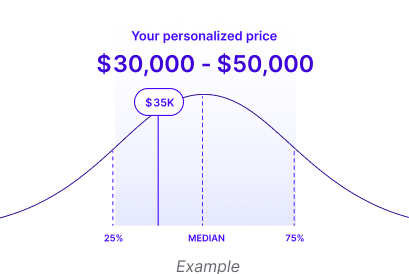Sophos
$4,662–$25,618per year
Fast, fair, easy pricing. No sales call required.
Sophos
|Visit sophos.com
How much does Sophos cost?
Median contract value
$10,241
Based on data from 28 purchases, with buyers saving 15% on average.per year
Median: $10,241
$4,662$25,618
LowHigh
See detailed pricing for your specific purchase
AI Quote Analysis
Upload your quote to check if you’re getting a fair price, under 2 minutes and completely free.

How does Sophos price and package their products?
View pricing on Sophos's website
Product:
User-based licensing
Contact for pricingPayment Terms: AnnualPopular Features: Integrates with Sophos Central and Intercept X
Compare prices for similar companies
| Supplier | Sophos | CrowdStrike |
|---|---|---|
| Median Contract Value | $10,241 | $49,788 |
| Avg Savings | 15.07% | 14.21% |
Other companies you may be interested in
Negotiating with Sophos
Negotiation Tips
Present competitors' quotes as alternative options to leverage better pricing or terms from Sophos. Highlight the differences in pricing and functionality if Sophos wants to keep your business.
Negotiate to remove any auto-renewal clauses in the contract. Emphasize that your finance team requires this change to proceed with renewal, which will give you the necessary leverage in future negotiations.
Challenge any proposed uplift in renewal by stating that your finance team does not approve such increases. Make a case for capping uplifts based on contract history and current budget constraints.
Offer to provide a reference or participate in a case study as a value-add to Sophos. In exchange, request a discount on your current renewals or new purchases reflecting this commitment.
If any additional security features are proposed that increase costs, point out that similar competitors provide certain features at no extra cost. If necessary, state that budget approvals are difficult under current financial conditions.
Considerations when buying Sophos
OwnershipPublicly traded
Fiscal year endMarch 31
Best months to buyJanuary, March, September
Payment TermsAnnual payment in advance, Monthly payment options available for certain products
Upgrades/downgradesYes, Sophos offers both upgrades and downgrades for its services, making it easy for users to adjust their resources as their needs change.
Redline thresholdRedline threshold estimate is $50k.
Vendr community insights for Sophos
What real buyers recommend in the negotiation process
Company with 201-1000 employeesThis year
Was able to secure 3 free months on a 15 month term with small uplift. Sourced Sophos renewal via CDW in exchange for end of month signature. Company with 201-1000 employeesThis year
While working on a 12 month renewal, reseller CDW offered additional 3 months for an additional $.29 per user for end of the month close. Company with 201-1000 employeesThis year
CDW is a reseller to utilize for Sophos possible savings off list priceCompany with 201-1000 employeesA while ago
Supplier will propose upwards of a 30% uplift on the user rates, even if all volumes are remaining the same. In this event we were able to leverage a 2 year agreement to secure a flat rate. Additional Info
What is Sophos?
Sophos Group plc is an English security software and hardware company.Sophos's 5 Product
Central Device Encryption
Sophos Group plc is a British based security software and hardware company.Central Intercept X Advanced for Server
Sophos Group plc is a British based security software and hardware company.Sophos Cloud Optix
Sophos Group plc is a British based security software and hardware company.Security and compliance
DPA available
SOC2 attestation
Annual penetration tests